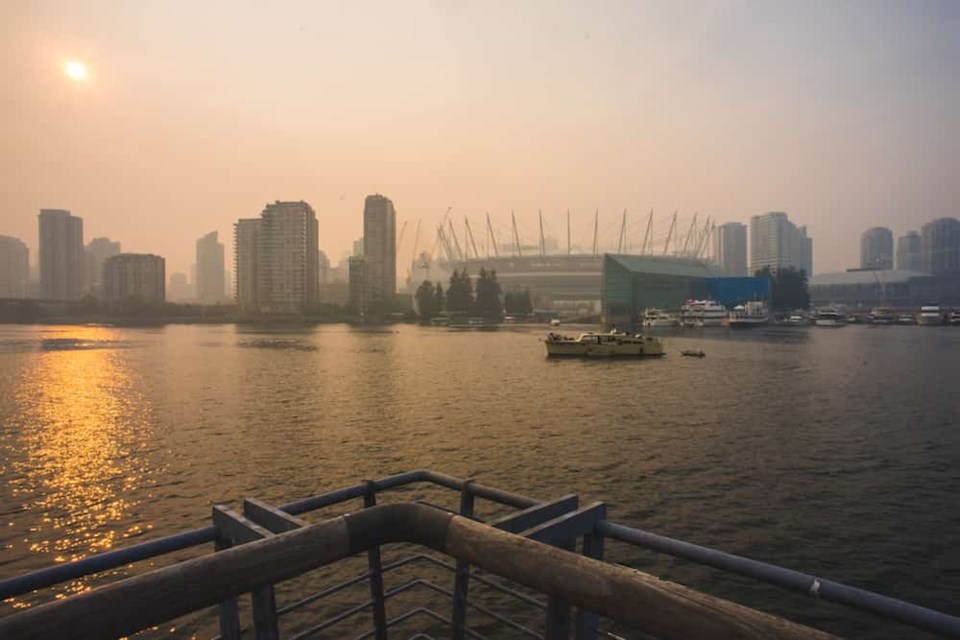As Metro Â鶹´«Ã½Ó³»continues its air quality advisory, health officials warn locals to reduce their exposure to smoke and seek cleaner air.
The air quality advisory has been in effect since Sept. 8 for Metro Â鶹´«Ã½Ó³»and the Fraser Valley Regional District due to wildfire smoke from outside the region.
And while air quality has continued to improve since yesterday, ground-level smoke still remains and is expected to remain throughout the week. A weather system forecast for Friday is expected to bring further improvements this weekend, but it isn't expected to clear all of the smoke out of the region. Localized smoke concentrations may vary widely across the region as winds and temperatures change, and wildfire behaviour changes.
Carmen Hartt, a meteorologist with Environment Canada, tells Â鶹´«Ã½Ó³» in a phone interview that Friday's weather pattern will clear some of the smoke out of the area, but that the smokey conditions are expected to persist until next week.
"There's rain, there's wind, and there's time - that's pretty much the three things," explains Hartt. "We're not really getting new smoke into the area and that's why we've seen an improvement, but it hasn't been pushed out."
Hartt notes that more smoke may come into southern B.C. before Friday, but that it won't be anything like last weekend. Last week, a ridge of high pressure steered smoke into the region, and right now we are in a stagnant period, which is why the smoke has settled.
"It does look like a big clearing will happen in the middle of next week," says Hartt.
Fluctuating air quality conditions between 'moderate' and 'high' are expected to continue over the next couple of days, but there won't be any significant changes before the weekend.
"In the middle of next week, a low-pressure system from the Pacific should bring some significant precipitation to coastal B.C.," says Hartt. "We call these atmospheric rivers and they tend to have a lot of precipitation.
"Moderate to heavy rain is possible."
If the low-pressure system materializes as forecast, then Hartt expects the smoke will completely clear out of the area. That said, wildfires burning south of the border could create more smoky conditions.
"The only caveat is the situation in California could be a lot worse," notes Hartt. "They're talking about another month or two of forest fire activity. And with changing weather patterns as they are, there could be another smoke event."
If you're feeling unwell these days, your first thought might be to get tested for the novel coronavirus. However, wildfires burning south of the border have created poor air quality in the Lower Mainland, which can cause a range of health effects. Find out how to tell the difference between symptoms, here.
Exposure to fine particulate matter is particularly a concern for people with underlying conditions such as lung disease, heart disease, chronic obstructive pulmonary disease (COPD), asthma, and/or diabetes, individuals with respiratory infections such as COVID-19, pregnant women and infants, children, and older adults. Individuals who are socially marginalized may also be at elevated risk.
For a way to comprehend the effects of the wildfire smoke, an app called Sh**t! I Smoke converts air quality into the number of cigarettes a person will 'smoke' in a day simply by breathing the air. Earlier this week, Vancouverites 'smoked' a staggering 8.3 cigarettes merely by breathing the air outside.



